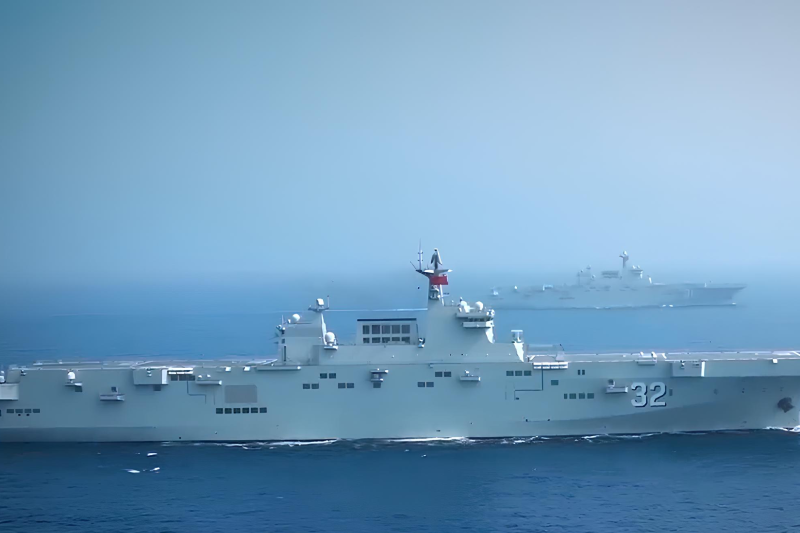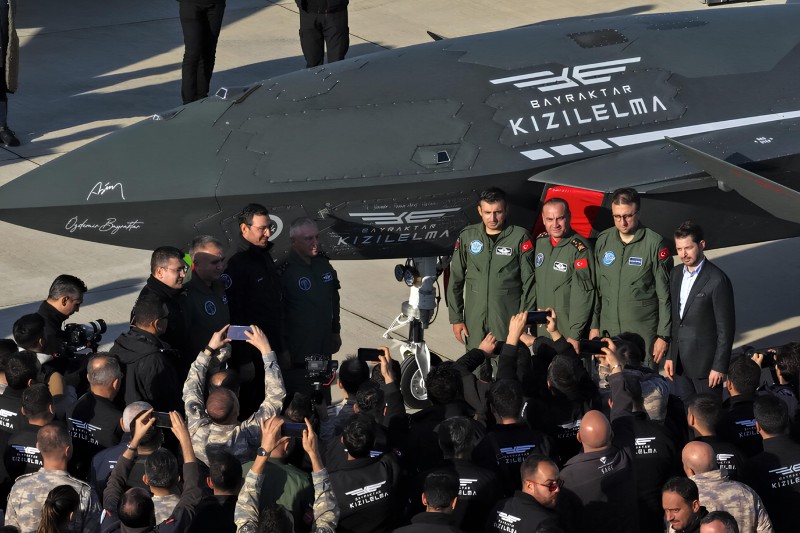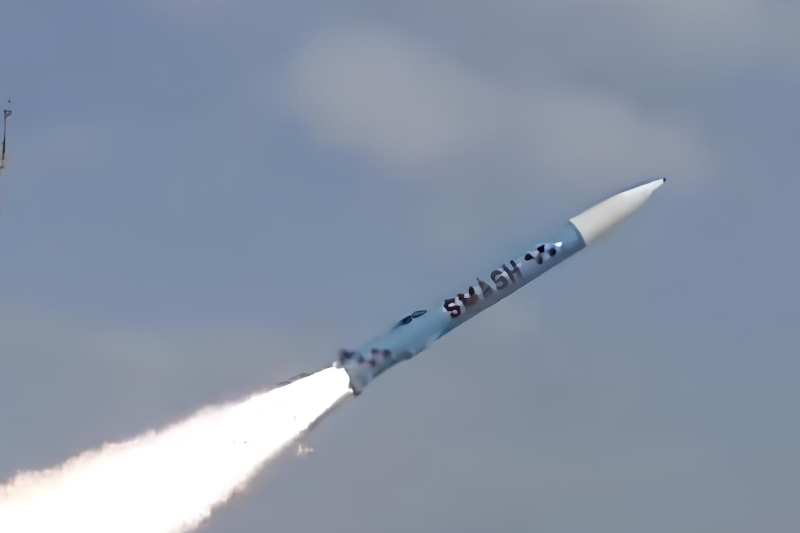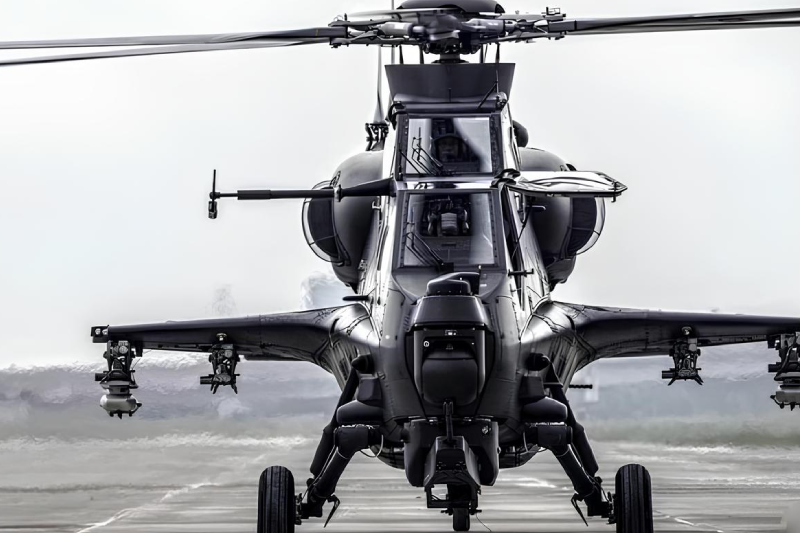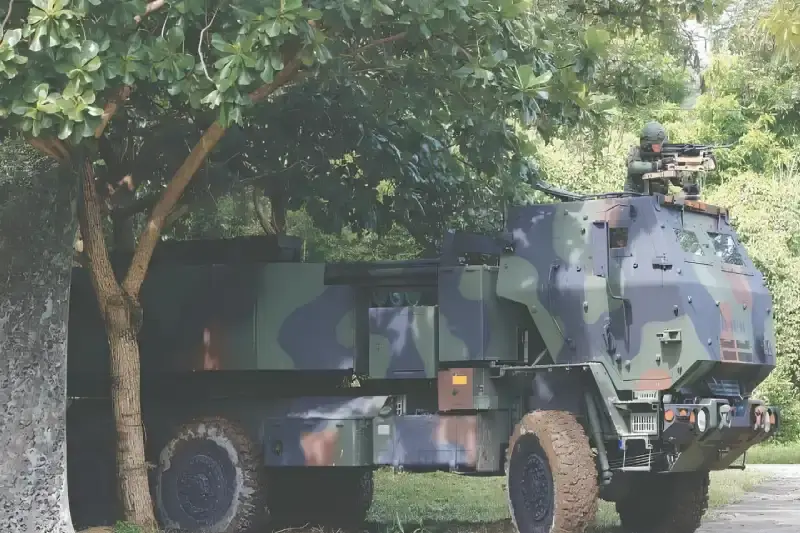Taiwan Showcases US HIMARS Rocket Systems in annual Drills
Taiwan’s military has begun deploying one of its newest and most precise strike weapons during intensified military exercises designed to demonstrate the island’s determination to resist any potential Chinese invasion. The deployment of advanced US-made HIMARS rocket systems during the annual Han Kuang exercises represents a significant escalation in Taiwan’s defensive capabilities.
HIMARS Systems Enter Taiwan’s Arsenal
Two armored trucks equipped with HIMARS (High Mobility Artillery Rocket Systems) were observed maneuvering around Taichung city near Taiwan’s central coast during the fourth day of the comprehensive 10-day Han Kuang exercises. This marks the first public deployment of these advanced weapon systems in Taiwan’s most significant annual military drills.
The HIMARS deployment demonstrates Taiwan’s commitment to modernizing its defense capabilities with cutting-edge American military technology. These highly mobile rocket systems provide Taiwan with unprecedented precision strike capabilities against potential invasion forces.
Strategic Concealment and Operational Tactics
Military officers at the exercise site emphasized the critical importance of concealing HIMARS systems from enemy aerial reconnaissance, satellites, and potential operatives behind Taiwanese lines until firing orders are given. This tactical approach reflects lessons learned from modern warfare, particularly the conflict in Ukraine, where similar concealment strategies have proven essential.
The emphasis on concealment highlights Taiwan’s understanding that these valuable assets must remain hidden from Chinese surveillance capabilities. The mobility and stealth characteristics of HIMARS systems make them ideal for hit-and-run tactics against invasion forces.
Comprehensive Han Kuang Military Exercises
The Han Kuang exercises represent Taiwan’s most comprehensive annual military drills, featuring fire simulation and live-fire components scheduled for the following week. These exercises will involve increased participation from air force aircraft and naval vessels, creating a realistic combat scenario that tests Taiwan’s integrated defense capabilities.
Senior Taiwanese military officials describe the Han Kuang drills as unscripted exercises designed to replicate full combat conditions. The exercises begin with simulated enemy attacks on communications and command systems, escalating to full-blown invasion scenarios that test Taiwan’s defensive readiness.
Chinese Military Pressure and Response
China views democratically governed Taiwan as its own territory and has intensified military pressure around the island over the past five years. This pressure includes staging intense war games and conducting daily naval and air force patrols around Taiwan’s territorial boundaries.
Taiwan’s defense ministry reported detecting 14 Chinese air force sorties and nine naval ships around the island overnight during the exercises. Nine of these sorties crossed the median line, the unofficial boundary between the two sides, demonstrating continued Chinese military provocations.
Taiwan’s Defense Stance and Leadership
Taiwan firmly rejects China’s sovereignty claims, with President Lai Ching-te stating that only Taiwan’s people can decide their future. This position reflects Taiwan’s commitment to democratic governance and self-determination in the face of increasing Chinese pressure and military threats.
The deployment of advanced American weapons systems during public exercises sends a clear message about Taiwan’s defensive intentions and capabilities. This demonstration serves both domestic and international audiences, showcasing Taiwan’s preparedness for potential conflict.
International Reactions and Military Analysis
China’s defense ministry dismissed the Han Kuang drills as “nothing but a bluff,” while its foreign ministry expressed “consistent and substantial” opposition to U.S.-Taiwan military ties. These reactions demonstrate Chinese sensitivity to Taiwan’s growing military capabilities and international defense partnerships.
Regional military attaches are closely monitoring the HIMARS deployment, particularly given their extensive use by Ukraine against Russian forces. The weapons’ proven effectiveness in the Ukraine conflict has increased international interest in their deployment capabilities and strategic applications.
HIMARS Technical Specifications and Capabilities
Taiwan received the first 11 of 29 HIMARS units last year, conducting initial testing in May. With an operational range of approximately 300 kilometers (190 miles), these weapons can strike coastal targets in China’s southern Fujian province across the Taiwan Strait.
The Lockheed Martin-manufactured systems provide Taiwan with precision strike capabilities that significantly enhance its defensive posture. Australia has also purchased these systems, reflecting their growing importance in regional defense strategies and military modernization efforts.
Integrated Defense Strategy
Taiwanese military analysts indicate that HIMARS systems will be used alongside locally developed Thunderbolt 2000 launchers, creating a comprehensive strike capability against Chinese forces. This integrated approach allows Taiwan to target enemy forces as they leave port or attempt coastal landings.
A Thunderbolt unit was observed in a park near the HIMARS systems during the exercises, demonstrating the coordinated deployment of both foreign and domestic weapon systems. This integration represents Taiwan’s strategy of combining advanced international technology with indigenous defense capabilities.
River Defense and Blockade Operations
Military personnel also staged a blockade of the Tamsui River outside Taipei, deploying explosive pontoons to simulate defensive operations. These river defense exercises demonstrate Taiwan’s multi-layered approach to homeland defense, extending beyond coastal and aerial threats to include inland waterway protection.
The comprehensive nature of these exercises reflects Taiwan’s understanding that modern warfare requires integrated defense strategies across multiple domains and geographical areas.
Also Read This: Germany Rheinmetall Unveils TGS-Mil Protected Armored Truck
The Han Kuang drills aim to demonstrate to China and the international community, including Taiwan’s key weapons supplier, the United States, that Taiwan is determined to defend itself against any Chinese attack or invasion. This messaging serves multiple diplomatic and strategic purposes.
The public nature of these exercises sends a clear deterrent message while reassuring international partners of Taiwan’s defensive capabilities and resolve. The demonstration of advanced American weapons systems also reinforces the importance of continued U.S.-Taiwan defense cooperation.
Keep connected with us at Facebook, Twitter, YouTube, Instagram & TikTok for the latest defense happening around the globe.
Discover more from International Defence Analysis
Subscribe to get the latest posts sent to your email.



